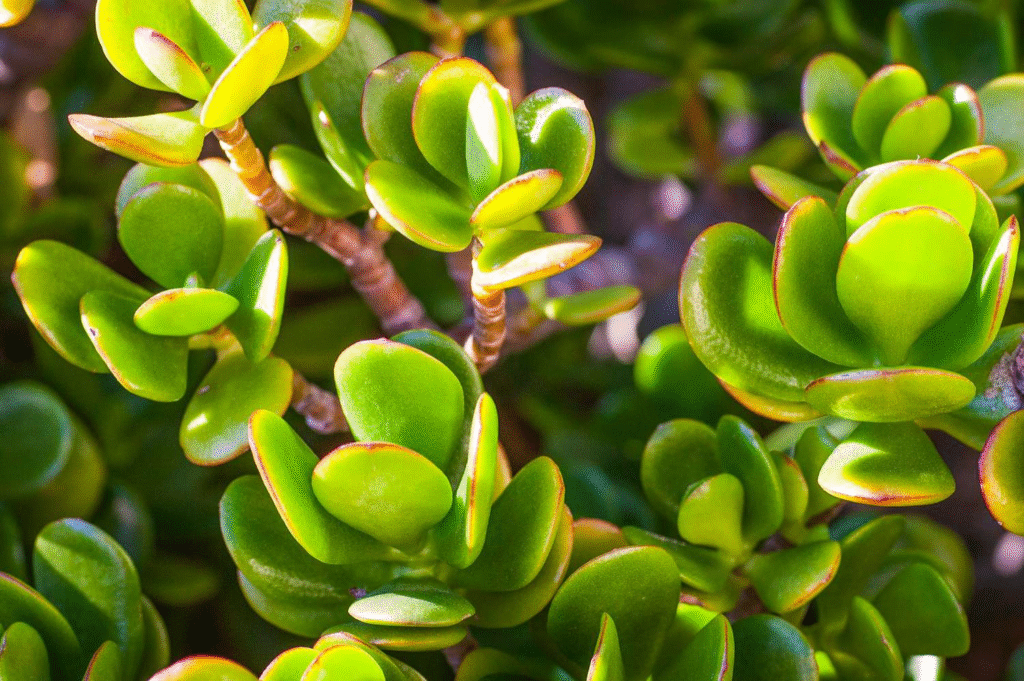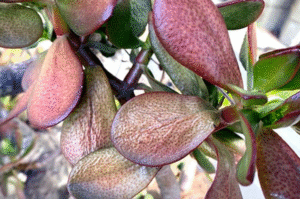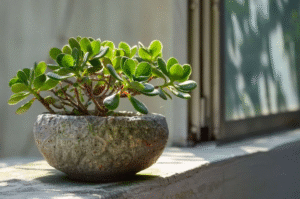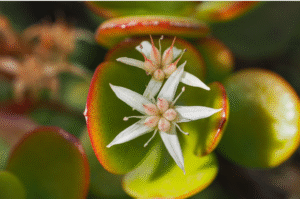Jade plants (Crassula ovata) are one of the most popular and resilient houseplants. With their thick, glossy leaves and easy-care nature, they make a perfect addition to indoor spaces. But what if you want to move your jade plant outdoors? Can jade plants live outside? The short answer is yes, but only under the right conditions.
In this article, we’ll review everything you need to know about growing jade plants outdoors. From climate conditions to placement tips and outdoor care, this guide will help you decide if your jade plant can thrive outside your home.
Quick Verdict: Yes, But With Caution
Jade plants can live outside if:
- Temperatures remain above freezing (32°F or 0°C),
- They get enough sunlight, and
- The soil drains well.
However, extreme cold, too much rain, or intense sunlight can harm them.
Ideal Outdoor Conditions for Jade Plants
To help your jade plant thrive outdoors, it’s crucial to understand the ideal growing conditions.
1. Temperature Requirements
Jade plants are native to South Africa, where the climate is mild and dry. They are not frost-tolerant and can be damaged or killed if exposed to freezing temperatures.
Ideal Temperature Range:
- Daytime: 65°F to 85°F (18°C to 29°C)
- Nighttime: Not below 50°F (10°C)
Pro Tip: If you live in USDA zones 10 to 12, you can grow jade plants outdoors year-round.
2. Sunlight Exposure
Jade plants love sunlight, but not all outdoor light is the same.
- Morning sunlight is best. It’s gentle and promotes healthy growth.
- Avoid intense afternoon sun in very hot climates, which can cause leaf scorching.
Light Requirement:
- 4 to 6 hours of direct sunlight is ideal.
If the leaves start turning red or brown, they may be getting too much sun. Consider placing the plant in partial shade.
3. Soil and Drainage
Jade plants need well-draining soil to avoid root rot. Outdoor soil that holds too much moisture can lead to problems.
Best Soil for Outdoor Jade:
- Cactus or succulent mix
- Mixed with sand, pumice, or perlite
Avoid planting in clay-rich or compacted soil.
How to Transition Your Jade Plant Outdoors
Moving your plant suddenly from indoors to outdoors can shock it. Here’s how to do it right:
1. Acclimate Slowly
Start by placing the jade plant in a shaded outdoor spot for a few hours a day. Gradually increase its time and exposure to sunlight over 7–10 days.
2. Watch the Weather
Never move jade plants outdoors during cold snaps, heavy rain, or extreme heat.
3. Use Pots First
If you’re unsure about your local weather, keep the jade plant in a portable pot. That way, you can bring it inside if needed.
Outdoor Jade Plant Care Tips
Once your jade plant is settled outdoors, here are a few care tips to keep it healthy:
1. Watering
Outdoor jade plants may dry out faster, but they still don’t like overwatering.
- Water only when the soil is completely dry.
- Avoid watering during rainy periods.
2. Fertilizing
Fertilize during the growing season (spring and summer) with a diluted succulent fertilizer once a month.
Avoid feeding in winter, when the plant naturally slows down.
3. Pruning
Outdoor jade plants can grow faster due to more sunlight.
- Trim leggy or top-heavy branches to maintain shape.
- Always use clean pruning shears.
Common Outdoor Risks and How to Avoid Them
Even though jade plants are tough, outdoor life comes with challenges.
Frost Damage
Leaves may turn mushy or black if exposed to freezing temperatures.
Solution: Bring the plant inside or cover it during cold nights.
Sunburn
Excessive direct sun can cause brown or red spots on leaves.
Solution: Move to a location with partial shade or morning sun only.
Pests
Outdoor plants may attract mealybugs, aphids, or spider mites.
Solution: Spray with neem oil or use a gentle insecticidal soap.
Can Jade Plants Be Planted in the Ground?
If you live in a warm and dry region year-round, such as parts of California, Arizona, or Florida, jade plants can be planted directly in the ground.
Make sure:
- The soil is sandy and drains well.
- There’s no risk of frost.
- The area gets partial to full sunlight.
Final Thoughts:
If you live in a warm, frost-free climate and can provide good drainage and sunlight, jade plants make excellent outdoor succulents. They can even grow into small shrubs or trees when given enough space and time.
But if you face cold winters or heavy rainfall, it’s better to keep jade plants in pots and move them outdoors only during the warmer months.






